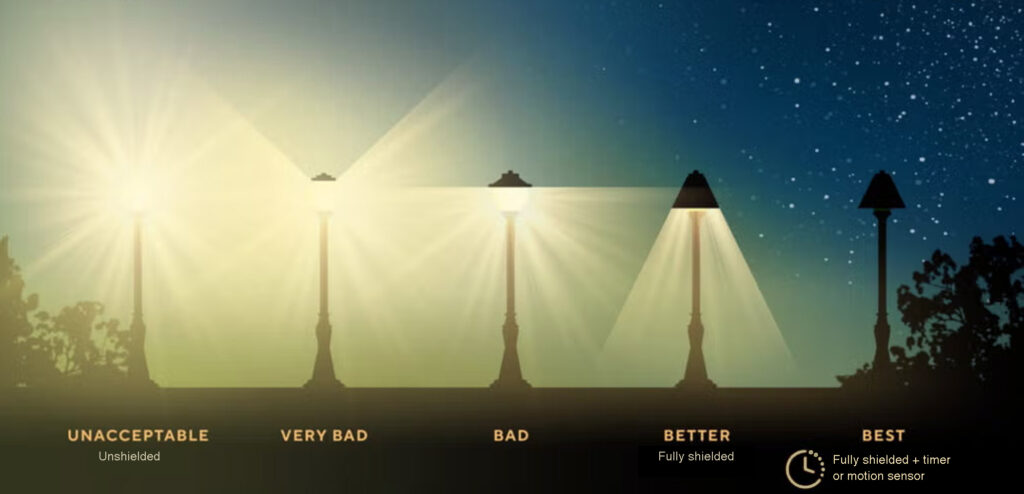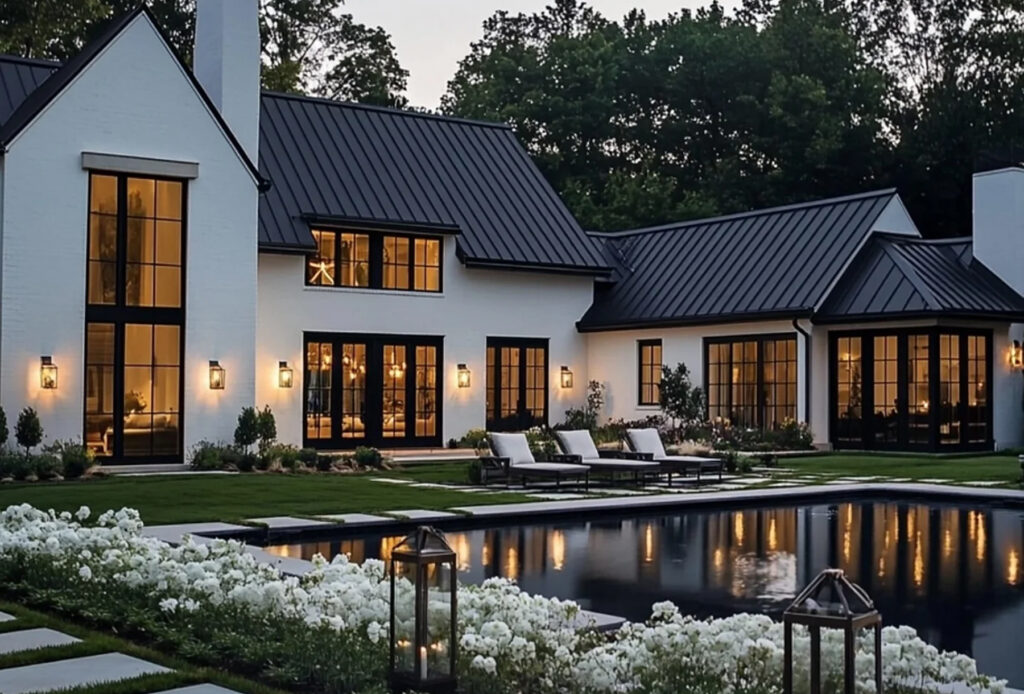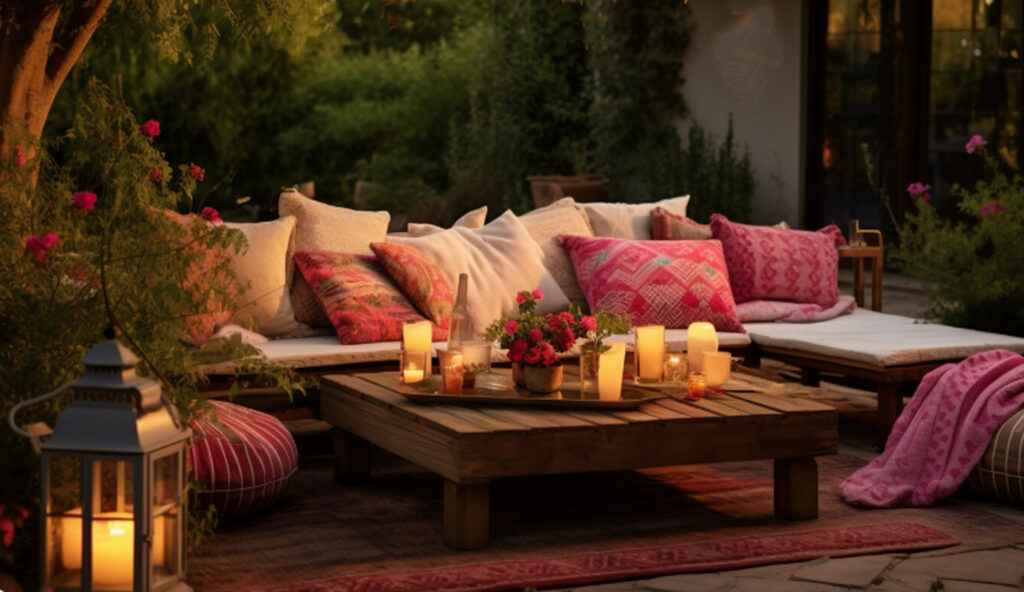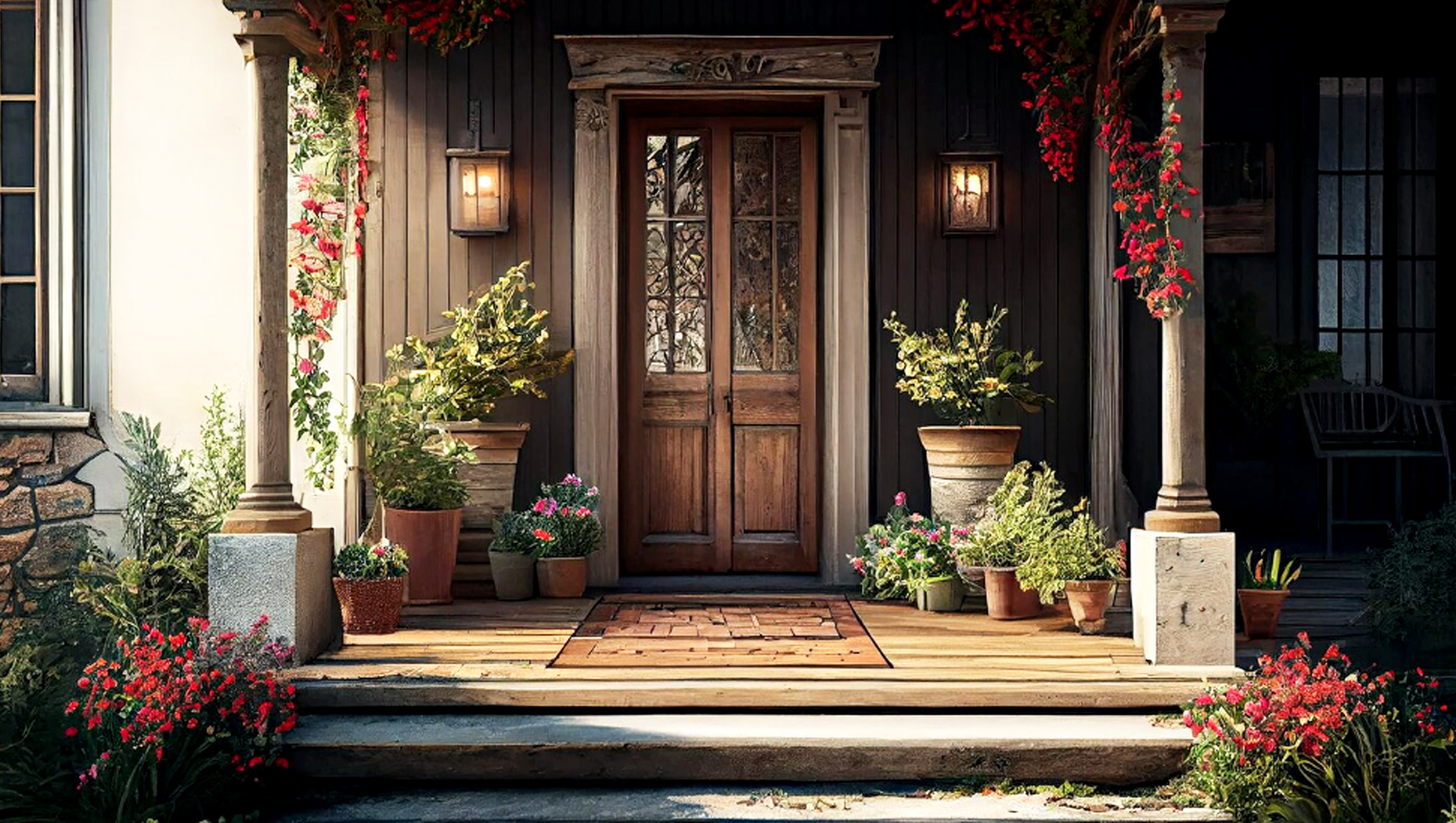Now that we have changed our clocks from Daylight Savings time to “Sun” time, it seems like a perfect time to rethink our outdoor décor. How can we let the beauty of the starlight and the warmth of subtle ambiance fill our senses as the days grow shorter?
We’ve long been told that more light means more beauty, more safety, more life. Yet, as our modern world floods our nights with brightness, we’ve dimmed something precious — the quiet harmony of the natural world and our connection to it. The new movement in outdoor décor isn’t about chasing the spotlight. It’s about rediscovering balance, a deeper sense of peace, connection, and natural harmony. It’s about honoring the night.
The Hidden Beauty of Darkness
When we step outside under a softly starlit sky — no glaring floodlights, no buzzing porch bulbs — we feel an inner longing, something ancient, yet familiar. The air seems fuller, the shadows more poetic. Darkness invites mystery, depth, and calm. It’s not emptiness; it’s a canvas.
Designers, ecologists, and homeowners are beginning to perceive low-light outdoor living as an act of mindfulness — a way to reconnect with the rhythms that modern life has blurred. Less light doesn’t mean less life. It means more authenticity, more texture, and more respect for what’s around us.
Light Pollution: The Glow We Didn’t Ask For
Artificial light has become one of the fastest-growing forms of pollution. It blurs our view of the stars, confuses nocturnal wildlife, and even disrupts human sleep cycles. But here’s the good news: small design choices can make a huge difference.

(photo credit: Scientific American)
By rethinking how we illuminate our homes, gardens, patios, and pathways, we can create spaces that feel safer, cozier, and more connected — without contributing to the sky glow that steals the night from us all. Be creative. Be unique. Take a moment to envision your home as a glowing ember, not a theatrical stage. Let it nestle into its natural surroundings, not overwhelm it. Don’t be swayed by trends. For instance, consider the impact we can make by not following the growing trend of outlining rooftops with decorative bulbs. This trend is not only expensive to install, it also increases energy costs, and it is a significant contributor to light pollution. Furthermore, it distracts from a home’s natural charm. Rooftop lighting radiates light upward and outward, creating glare that obscures the night as well as wastes energy. This over-illumination can make neighborhoods appear harsh and cluttered, rather than warm and inviting. Moreover, when so much attention is drawn to the roofline, the soft, welcoming glow that should highlight the home’s entryway—the true focal point of the home—is overshadowed. As a result, the front door loses its prominence, and the home’s exterior design feels unbalanced and less inviting.
Intentionally choosing to create subtle, alluring elegance with warm and inviting accents excites our inner serenity and our natural sense of place—a sense of coming home. And interestingly, by not following the masses sets your home apart, enhancing its prominence and charm.
Design with Subtlety: Tips for a Night-Friendly Outdoor Space
- Soft Illumination, Strong Impact
Targeted lighting can make an outdoor space feel magical—without overwhelming the senses. Choose fixtures that direct light toward the ground, not the sky. This preserves starlight and reduces glare, while still offering gentle visibility. Shielded lights or solar path lamps with soft diffusion create just enough glow to guide your steps while letting the stars shine through.

One small design choice, directing light downward + managing when it’s on, can have a huge impact. (photo credit: Boise State University)
- Warm and Dim
Opt for warm, low-intensity bulbs with a color temperature below 3000K. These mimic firelight and feel natural after sunset; they’re inviting, not intrusive. Bringing artificial light into nature is different than bringing it into the inside of our home. When designing the exterior, use low-intensity 25W bulbs or 40W bulbs, or fixtures with dimmers; these can provide sparkling light without jarring nature or our eyes.

This porch demonstrates how a home can have warmth and elegance while honoring the night. Notice the potential for controlling the intensity of light by creating layers of light with light zones, e.g. the two lights that the flank the door should be one zone; the ceiling lights should be a second zone; and the lanterns a third zone. Additionally, the lanterns should have timers, so they automatically turn on and off, reducing light pollution as well as saving you time. (photo credit: edwardgeorgelondon.com)
- Use Smart Timing
Motion sensors and timers help balance function with restraint. Lights that only appear when needed conserve energy, protect wildlife, and enhance the serenity of your evenings. Think of lighting as a tool, not a constant presence—something that serves you and the night.
- Celebrate Shadows and Silhouettes
Light and shadow are partners in art and nature. Instead of banishing darkness, use it. Let your garden’s shapes—trees, sculptures, or stonework—cast soft silhouettes that shift with the moonlight. These subtle contrasts add depth and dimension that harsh lighting can never achieve.
- Natural Reflectors
Let nature’s magic fill the night by incorporating pale stones, water features, or plants with light-colored foliage. It can be totally captivating to see how they subtly reflect moonlight, creating a tranquil shimmer that no bulb can replicate.

photo credit: dwellect.com; photo: @yeginfill)
- Design for Mood, Not Brightness
Outdoor décor isn’t just about what we see—it’s about how we feel. Lanterns, candles, a firepit with a shielded cap, and glow stones can turn a patio or porch into a peaceful retreat. Flickering candles or a dim, amber down-light over a dining table can encourage slower meals, deeper conversation, and calm reflection.
Remember, if real candles, the ones that are lit with a match or lighter, are being used, keep the air fresh and do not use fragrance-scented candles or paraffin wax candles. As mentioned in my article titled “EMBRACING AUTUMN GRACEFULLY: Holistic & Elegant Outdoor Décor Ideas” , only use fragrance-free beeswax or soy candles. If uninvited bugs are creating a distraction, add a few drops of Citronella essential oil or Lemongrass essential oil to the candle’s melting wax pool. This will send the message to your uninvited guests that they need another source of evening entertainment.
- Embrace the Nightlife
Too much artificial light disrupts the rhythms of birds, bats, pollinators, nocturnal wildlife, and even plants. By dimming our spaces, we invite the nightlife back. Imagine hearing the captivating hoot of owls again, the ethereal cry of a coyote or wolf in the distance, the chattering of foxes in the crisp winter air; these are innate reminders that we’re part of a living ecosystem.

It’s so easy to rethink the night with soft lighting and warm conversations, and it creates the perfect invitation for the moon and stars to join in.
Harmony Over Hype
When our décor honors the night, we invite harmony — between human comfort and ecological respect, between beauty and restraint. We start to see that “less light” doesn’t mean losing something. It means gaining awareness, sensitivity, and serenity.
Our homes can be both welcoming and wise — luminous, not in wattage, but in intention.
With the days growing shorter and the nights longer, our desire to light up the night by illuminating the outside of our house strengthens, pause before reaching for another bulb. Ask instead: How can I collaborate with the natural order of things and let the night return?


Leave A Comment